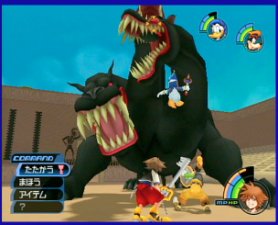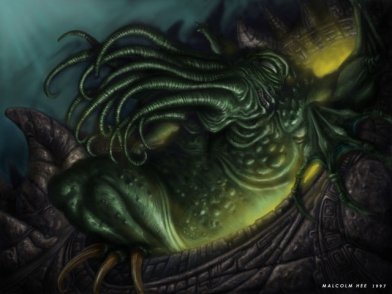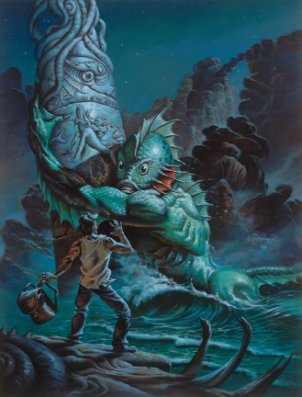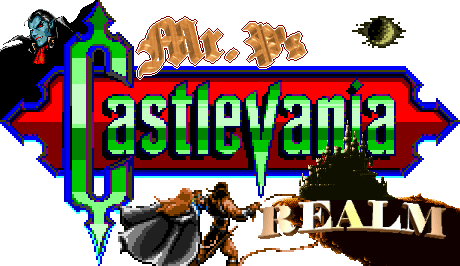
![]() Castlevania
Enemy Origins
Castlevania
Enemy Origins ![]()
| Enemy Name: | Centipod (as derivative of "Centipede") |
| Games In: | Akumajou Dracula X68000 |
| Description: | "Centipedes belong to the class of arthropods called the 'chilopoda.' They have an elongated, segmented body; unlike millipedes, each body segment bears a single pair of legs rather than two. Like spiders, though, centipedes have glands, which are connected to the claws of the first set legs rather than to the fangs; they are used to kill their prey. A bite from smaller specimens is not very dangerous to humans; however, the bite of the largest species can be deadly. Centipedes like damp locations. The largest of centipedes can measure thirty centimeters." |
| Picture(s): |
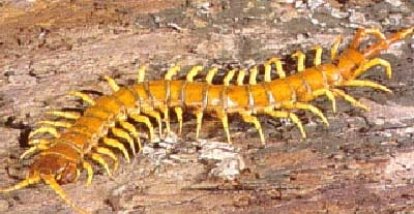 |
| References: | www.schools.ash.org.au/ mooloolah/animals-1b.html |
![]()
![]()
![]()
![]()
| Enemy Name: | Chronomage |
| Games In: | Castlevania: Aria of Sorrow and Castlevania: Dawn of Sorrow (soul form only) |
| Description: | "This is a reference to the time-keeping rabbit from Alice in Wonderland." |
| Picture(s): |
 |
| References: | www.flipsideweb.com/websiteimages-h/aliceinwonderland-ost-1p.JPG |
![]()
![]()
| Enemy Name: | Chupacabras |
| Games In: | Castlevania: Lords of Shadow |
| Description: | "The name chupacabra is Spanish and means 'goat sucker.' It is a cryptid creature rumoured to inhabit parts of the Americas. It is reported to drink the blood of livestock, especially goats. Scientists believe that the chupacabras are simply parasite-riddled coyotes. The cave troll lesser enemy found in Symphony of the Night, Dawn of Sorrow, Portrait of Ruin and Order of Ecclesia is called 'chupacabra' in the Japanese versions. The first picture is a fabrication of a chupacabra. The second picture shows a coyote killed in Texas in 2004 (Elmendorf beast), interpreted as being a chupacabra." |
| Picture(s): |
|
| References: | www.monstropedia.org/monster/Chupacabra www.paranormal-encyclopedie.com/wiki/Articles/B%EAte_d_Elmendorf |
![]()
![]()
| Enemy Name: | Cockatrice |
| Games In: | Castlevania: Aria of Sorrow and Castlevania: Curse of Darkness |
| Description: | "This is the medieval name for this beast. It represents the fusion of crocodile and a fabulous snake, born from an egg laid by a cock and incubated by a toad or a snake. (See also Basilisk.)" |
| Picture(s): |
 |
| References: | www.eaudrey.com/myth/cockatrice.htm |
![]()
![]()
| Enemy Name: | Coppelia |
| Games In: | Castlevania: Portrait of Ruin |
| Description: | "Coppélia is a ballet that premiered on May 25th of 1870; it's based upon a macabre story published in 1815. This story concerns faintly inventor Doctor Coppélius, who has created a life-size dancing doll. The original Coppélia, Giuseppina Bozzacchi, was a young student dancer who was sixteen years old; she died of cholera one year later. Some influence of this story comes from traveling shows of the 18th and 19th centuries, which starred mechanical automatons." |
| Picture(s): |
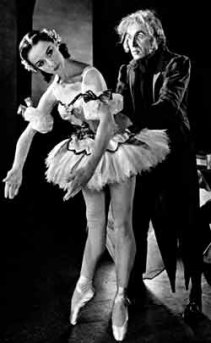 |
| References: | www.balletto.net/immagini/rep-coppelia.jpg |
![]()
![]()
| Enemy Name: | Crows and Ravens |
| Games In: | Vampire Killer, Castlevania, Castlevania III: Dracula's Curse, Super Castlevania IV, Castlevania II: Belmont's Revenge, Akumajou Dracula X68000, Dracula X: Rondo of Blood, Castlevania Bloodlines, Castlevania: Dracula X, Castlevania: Symphony of the Night, Castlevania: Aria of Sorrow, Castlevania: Portrait of Ruin and Castlevania: Order of Ecclesia |
| Description: | "Crows is a common name used for about twenty-seven different birds, including ravens belonging to the family Corvidae of the order Passeriformes. They are found on all continents, except on Antarctica and South America. Those omnivorous birds are often gregarious and highly intelligent; because they are considered great pests, the scarecrow was invented to frighten them away. The best known species is the American crow (Corvus Brachyrhynchos); this a relatively great bird, about fifty centimeters long and sixty-six centimeters large." |
| Picture(s): |
 |
| References: | www.nwhc.usgs.gov/research/west_nile/wnv_bird_id.html |
![]()
![]()
| Enemy Name: | Cruela |
| Games In: | Super Castlevania IV |
| Description: | "Cruela is the bad guy--or, rather, 'bad girl'--in the animated Walt Disney movie 101 Dalmatians." |
| Picture(s): |
 |
| References: | www.eecs.umich.edu/ ~joshual/dalmatian.html |
![]()
![]()
![]()
![]()
| Enemy Name: | Cyclops |
| Games In: | Castlevania III: Dracula's Curse, Castlevania: Harmony of Dissonance, Castlevania: Lament of Innocence, Castlevania: Curse of Darkness and Castlevania: Curse of Darkness |
| Description: | "Born to Gaea and Uranus, Cyclopes were giants with only one eye; released from Tartarus by Zeus, they helped the gods to defeat the Titans and gave to Zeus his weapons of lightning and thunder. Later, they helped Hephaïstos, the smith god. The most popular Cyclops was Polyphemus, who was blinded by Ulysses." |
| Picture(s): |
 |
| References: | www.irasov.com/pics/polyphemus.gif |
![]()
![]()
| Enemy Name: | Dagon |
| Games In: | Castlevania: Portrait of Ruin |
| Description: | "Originally, Dagon was a Philistine deity often represented as half-fish, half-men akin to a siren. The symbol of fish was meant to represent fertility and the vivifying powers of nature and reproduction. The name 'Dagon' derives from 'dag,' which means 'fish.' Dagon is also in the Ctulhu mythos a member of the Great Old Ones, described as a giant frog-like creature. It's probably the Lovecraft's Dagon, which has inspired the look as seen in Portrait. (See also Ctulhu.)" |
| Picture(s): |
|
| References: | www.bible-history.com/sketches/ancient/dagon-1.jpg www.templeofdagon.com/artwork/jeff-remmer/Dagon.jpg |
![]()
![]()
| Enemy Name: | Dark Octopus |
| Games In: | Castlevania: Symphony of the Night and Castlevania: Order of Ecclesia |
| Description: | "Octopus, also called poulp, is a kind of highly evolved mollusk with eight tentacles. The Latin name for the most common species is 'Octopus Vulgaris.' As you may have experienced in Symphony, the octopi are able to expel ink when they are in danger, which allows them to escape; they are also able to change their coloration to camouflage themselves on the sea floor." |
| Picture(s): |
 |
| References: | www.chartingnature.com/fishprint.cfm?print=2720 |
![]()
![]()
| Enemy Name: | Darkside |
| Games In: | Castlevania II: Belmont's Revenge |
| Description: | "His name, his robe and his use of thunder as an attack very much reminds one of Emperor Palpatine from Star Wars: Return of the Jedi. And what does the Emperor want Luke Skywalker to do? He wants the youth to join 'the dark side.' " |
| Picture(s): |
 |
| References: | www.eyeonstarwars.com/.../ character/emperor.html |
![]()
![]()
| Enemy Name: | Dead Crusader |
| Games In: | Castlevania: Aria of Sorrow, Castlevania: Dawn of Sorrow and Castlevania: Portrait of Ruin |
| Description: | "Crusades are a series of several military campaigns usually sanctioned by the Papacy; the most famous took place during the 11th century through the 13th. The purpose of most was to capture the Holy Land from the Muslims; however, others were diverted against other Christians and Cathars. The most important crusades are the following: First Crusade, Second Crusade, Third Crusade, Fourth Crusade, Albigensian Crusade, Children's Crusade, Fifth Crusade, Sixth Crusade, Seventh Crusade, Eighth Crusade, Ninth Crusade, and, finally, the Crusades in Baltic and Central Europe." |
| Picture(s): |
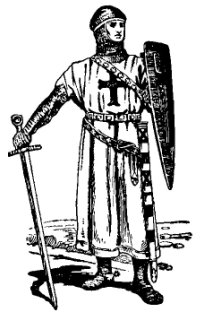 |
| References: | novaonline.nvcc.edu/eli/Troy/crusader.JPG |
![]()
![]()
| Enemy Name: | Death Dragon, Dragon Zombie and Skeleton Dragon |
| Games In: | Akumajou Dracula X68000, Castlevania Legends, Castlevania: Circle of the Moon and Castlevania: Portrait of Ruin |
| Description: | "Dragons are probably the most famous mythical monsters. They are divided into two categories: Occidental and Oriental dragons. The Occidental dragon is the type usually encountered in fantasy novels and RPGs; they are big and ferocious, able to spit fire, most popularly. Most of this type never sleep, and for this reason, they are often treasures' guardians. Contrary to the Occidental type, Oriental dragons are essentially benevolent; they control the water element and symbolize long life and prosperity. Besides common dragons, there exist many subspecies: Dragonet, Ouroboros, Icedrakes, Firedrakes, Hydra, Amphiptere, Amphisbaena, Wyrm, and Wyvern. Many animals have inspired the creation of dragons: Birds, crocodiles, dinosaurs, etc. There is also the Komodo's dragon (Varanus komodensis), which is the greatest lizard in the world, reaching up to three meters long. (See also Ouroboros, Wyrm and Wyvern)." |
| Picture(s): |
 |
| References: | www.cs.virginia.edu/~dbi9m/fantasy/dreamverses/dragon/01/pDragon05.jpg |
![]()
![]()
| Enemy Name: | Death Mantis |
| Games In: | Castlevania: Circle of the Moon |
| Description: | "The religious mantis (mantis religiosa) is an insect found in Europe. They are diurnal and like places with there's a lot of sunshine. This species is called 'religiosa' because of its front legs, which give the appearance that it's praying; however, the animal is carnivorous and uses the two 'arms' to capture its prey. Its sexual habits are really deadly: Once the coupling is completed, the female eats its companion. Most mantis species can be found in tropical countries; in that sense, some of them can even look like flowers." |
| Picture(s): |
 |
| References: | www.treknature.com/gallery/Europe/France/photo3530.htm |
![]()
![]()
| Enemy Name: | Decarabia |
| Games In: | Castlevania: Dawn of Sorrow |
| Description: | "Decarabia, also called 'Carabia,' is a Great Marquis of Hell who commands thirty legions of spirits. He knows the virtues of all herbs and precious stones and can change into all birds plus sing and fly like them. He appears as a pentagram star and can change into a man if requested. The picture below shows his seal. (See also the Bat Pentagram/Pentagram description in the Arsenal Origins)." |
| Picture(s): |
 |
| References: | www.deliriumsrealm.com/delirium/mythology/decarabia.asp |
![]()
![]()
| Enemy Name: | Devil |
| Games In: | Castlevania: Circle of the Moon, Castlevania: Harmony of Dissonance, Castlevania: Aria of Sorrow and Castlevania: Dawn of Sorrow |
| Description: | "The term 'devil' is derived from the Greek word 'diabolos,' which means 'to slander.' It refers to a supernatural entity that is the embodiment of evil. The devil has many original names: Satan, the adversary, the tempter, the wicked one, Prince of this World, the Old serpent, the Beast, etc. In Christian demonology, Satan, Lucifer and Beezelbub are all different entities; this may be an attempt to establish a hellish trinity, to counter the Christian Trinity of the Father, the Son and the Holy Ghost. (See also Beezelbub.)" |
| Picture(s): |
 |
| References: | www.themarketbuzz.com/runes/devil.jpg |
![]()
![]()
| Enemy Name: | Dodo Bird |
| Games In: | Castlevania: Symphony of the Night and Castlevania: Portrait of Ruin |
| Description: | "The dodo (raphus cucullatus) was a forest-dwelling bird living on Mauritius island. Since it couldn't fly nor could it run fast, it was hunted by sailors for its flesh and as a result became totally extinct by 1681." |
| Picture(s): |
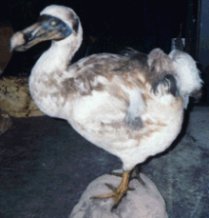 |
| References: | www.ecuita.com/dodo.GIF |
![]()
![]()
| Enemy Name: | Dogether |
| Games In: | Dracula X: Rondo of Blood and Castlevania: Portrait of Ruin |
| Description: | "Dogether is probably a 'beholder,' a fictional monster class in Dungeons & Dragons. Beholders have a spheroid body with a large-fanged mouth and a single eye on its front. They often infiltrate and seek to control many sectors of society." |
| Picture(s): |
 |
| References: | www.fictionalworlds.com/forgotrealms/CREATURES/BEHOLDER.jpg |
![]()
![]()
| Enemy Name: | Doppelganger |
| Games In: | Castlevania III: Dracula's Curse, Castlevania: Symphony of the Night, Castlevania: Lament of Innocence, Castlevania: Dawn of Sorrow (soul form only) and Castlevania: Portrait of Ruin |
| Description: | "In German, 'doppel' means 'double' and 'gänger' means 'goer.' The name refers to any double of a person. In folklore, doppelgangers cast no shadow and no reflection in a mirror or in water. They are supposed to provide advice to the person they shadow, but this advice could be misleading or malicious." |
![]()
![]()
| Enemy Name: | Dracolith Titan |
| Games In: | Castlevania: Lords of Shadow |
| Description: | "In the Forgotten Realms series, a dracolich is a dragon that has voluntary chosen to become a lich. (See the description of Shaft's Ghost for info about a lich.)" |
| Picture(s): |
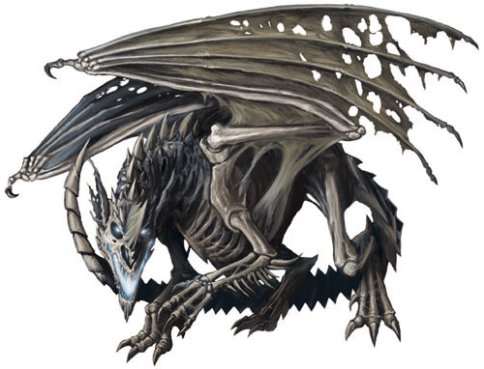 |
| References: | www.fredhooper.com/gallery/color/color_dracolich.htm |
![]()
![]()
| Enemy Name: | Draghinazzo |
| Games In: | Castlevania: Dawn of Sorrow |
| Description: | "This is another demon from The Divine Comedy. His name means 'big dragon.' (See also Barbariccia, Cagnazzo, Lubicant, Malacoda and Skull Millione.)" |
![]()
![]()
| Enemy Name: | Dragonfly |
| Games In: | Castlevania: Portrait of Ruin |
| Description: | "Dragonflies are insects from the order Odonata, which has existed for 320 million years. They are characterized by their large eyes, strong transparent wings, and elongated bodies. They are often found around wet areas because their larvae are aquatic. They are valued as predators because they eat small deranging insects like mosquitoes and flies. The largest actual species (Anax strenuus) is found in Hawaii and can reach 19 centimeters. The largest species to have ever existed (Meganeura) lived about 300 millions years ago and could reach a wingspan of 75 centimeters. The first picture shows the anatomy of the dragonfly and the second the life-cycle." |
| Picture(s): |
|
| References: | www.amonline.net.au/wild_kids/images/freshwater/dragonfly_illus.jpg www.habitas.org.uk/dragonflyireland/anatomy_1.htm |
![]()
![]()
| Enemy Name: | Dryad |
| Games In: | Castlevania: Circle of the Moon, Castlevania: Aria of Sorrow, Castlevania: Dawn of Sorrow and Castlevania: Portrait of Ruin |
| Description: | "In Greek mythology, Dryads are nymphs of oak trees. If they lived inside the tree, they were called 'hamadryads.' Like all nymphs, dryads were long-lived, but if the tree died, any dryads associated with it would die as well. The name 'drys,' incidentally, means 'oak.' " |
| Picture(s): |
 |
| References: | www.joflasher.com/art/dryad3.jpg |
![]()
![]()
| Enemy Name: | Dullahan (also known as "Dhuron") |
| Games In: | Castlevania III: Dracula's Curse, Super Castlevania IV, Dracula X: Rondo of Blood, Castlevania: Dracula X, Castlevania: Symphony of the Night, Castlevania: Circle of the Moon, Castlevania: Lament of Innocence, Castlevania: Curse of Darkness, Castlevania: Portrait of Ruin and Castlevania: Order of Ecclesia |
| Description: | "This is one of the most terrifying creatures in the Irish fairy realm; it can be seen after sunset during certain festivals and on feast days. Headless, it carries with it its own head. The entire head is phosphorescent and can see for vast distances across the countryside, even on the darkest night. Dullahan rides a black stallion that emits sparks and flames from its nostrils. Unlike a banshee, Dullahan does not come to warn of an imminent death, since it is a definite harbinger of someone's demise. It has limited power of speech, having only the ability to call the name of a person whose death it heralds. If you watch as it passes, you'll usually be punished by having a bucket of blood thrown in your face. The only protection against Dullahan is an object made of gold. It is thought that Dullahan is the embodiment of the Celtic fertility god Crom Dubh. In the series' games, it is sometimes dubbed 'Dhuron'; however, this nickname doesn't seem to exist. The true alternates for Dullahan are 'Dullaghan,' 'far dorocha' and 'Crom Dubh.' " |
| Picture(s): |
  |
| References: | purcine.free.fr/films/s/sleepy_hollow/xl_sleepy_hollow-affiche.jpg www.cielidirlanda.it/Cultura/ilpopolofatato/dullahan.jpg |
![]()
![]()
| Enemy Name: | Ectoplasm |
| Games In: | Super Castlevania IV, Dracula X: Rondo of Blood, Castlevania: Bloodlines, Castlevania: Symphony of the Night, Castlevania: Circle of the Moon, Castlevania: Harmony of Dissonance, Castlevania: Aria of Sorrow, Castlevania: Curse of Darkness, Castlevania: Portrait of Ruin and Castlevania: Order of Ecclesia |
| Description: | "This is a term derived from the Greek words ektos ('interiorization') and plasm ('substance'). It was created by Professor Charles Ricket, one of the presidents of the Society for Psychical Research. The term is used to describe a substance coming from the body of a medium during a seance; it is said to be gelatinous and viscous, usually white in color. Spiritualists believe it to be the materialization of the astral body." |
| Picture(s): |
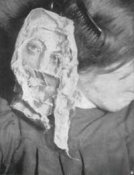 |
| References: | www.randi.org/jr/112103.html |
![]()
![]()
| Enemy Name: | Edimmu |
| Games In: | Castlevania: Order of Ecclesia |
| Description: | "In Sumerian mythology, the edimmu is an evil ghost of a dead person who hasn't been properly buried." |
![]()
![]()
| Enemy Name: | Elgiza |
| Games In: | Castlevania: Portrait of Ruin |
| Description: | "This is a reference to the Great Sphinx of Giza, which is located on the Giza Plateau at the west bank of the Nile near the three great pyramids. The Great Sphinx of Giza is the largest single stone statue in the world--it's 57 meters long, 6 meters wide and 20 meters high. The face of Elgiza, as seen in the game, wears a Tutankhamen mask; however, the real face of the sphinx shows either the pharaoh Khafra or his half-brother Djedefre." |
| Picture(s): |
 |
| References: | guardians.net/egypt/sphinx/images/sphinx-southeast-2001.jpg |
![]()
![]()
| Enemy Name: | Enkidu |
| Games In: | Castlevania: Order of Ecclesia |
| Description: | "In the Ancient Mesopotamian poem Epic of Gilgamesh, Enkidu is originally a wild man raised by animals who later becomes the friend of Gilgamesh. Enkidu's death, caused by a curse sent by the gods, inspired Gilgamesh's quest to escape death." |
| Picture(s): |
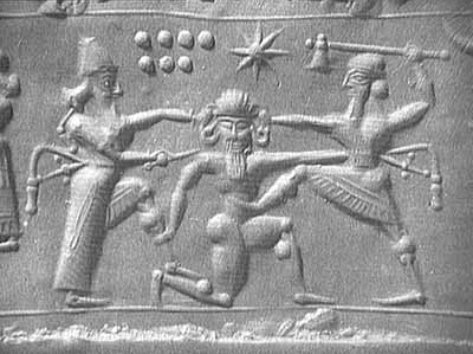 |
| References: | www.crystalinks.com/sumergods1.html |
![]()
![]()
| Enemy Name: | Erynis |
| Games In: | Castlevania: Aria of Sorrow and Castlevania: Dawn of Sorrow |
| Description: | "Also called 'the Furies' and 'the Eumenides,' the Erynis (or 'the Angry Ones') are in Greek mythology three women sent to avenge the souls of the dead and bring about justice. " |
| Picture(s): |
 |
| References: | www.deliriumsrealm.com/delirium/mythology/erinyes.asp |
